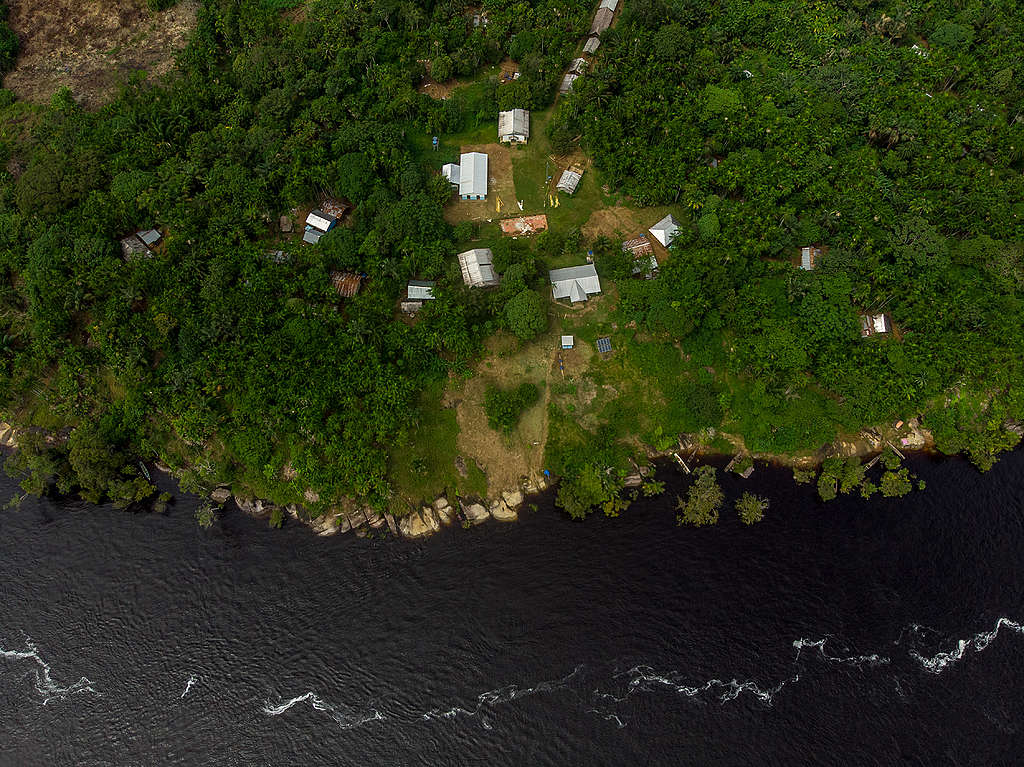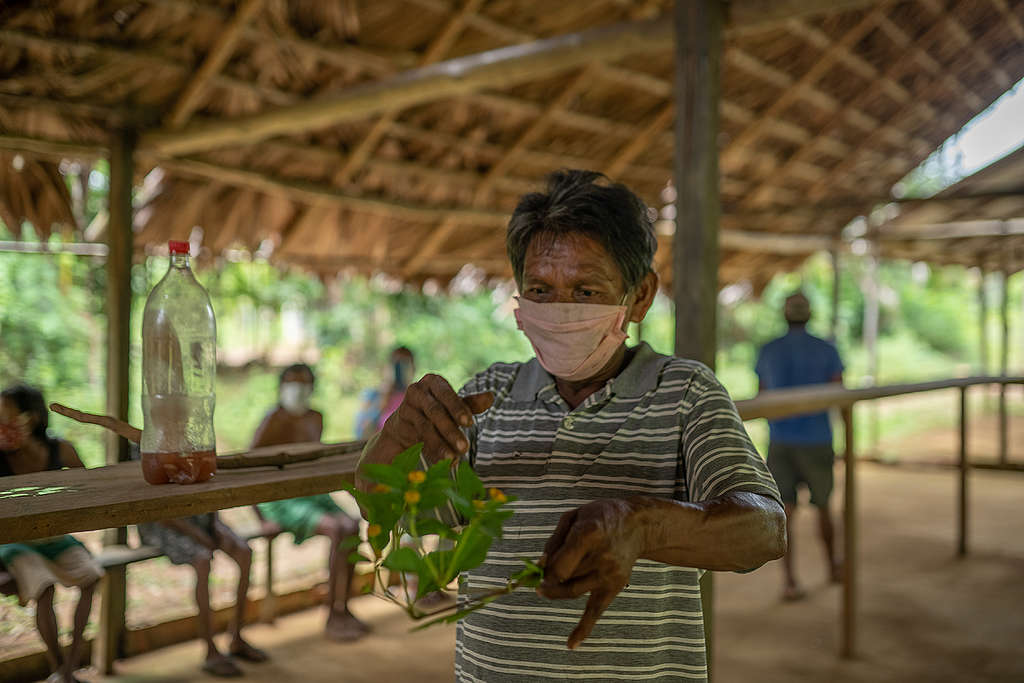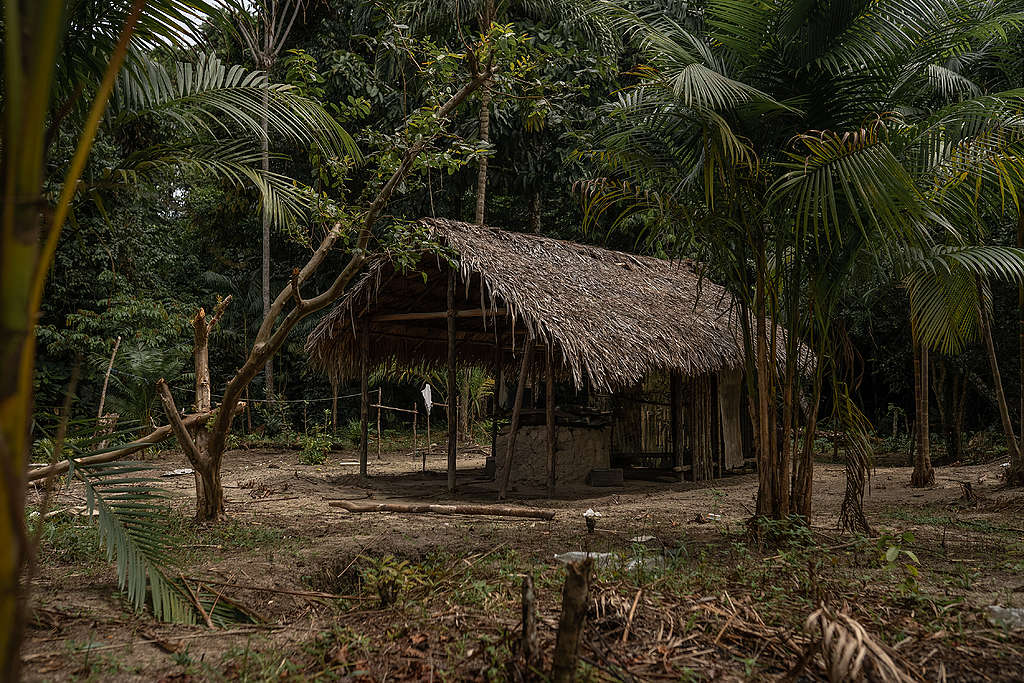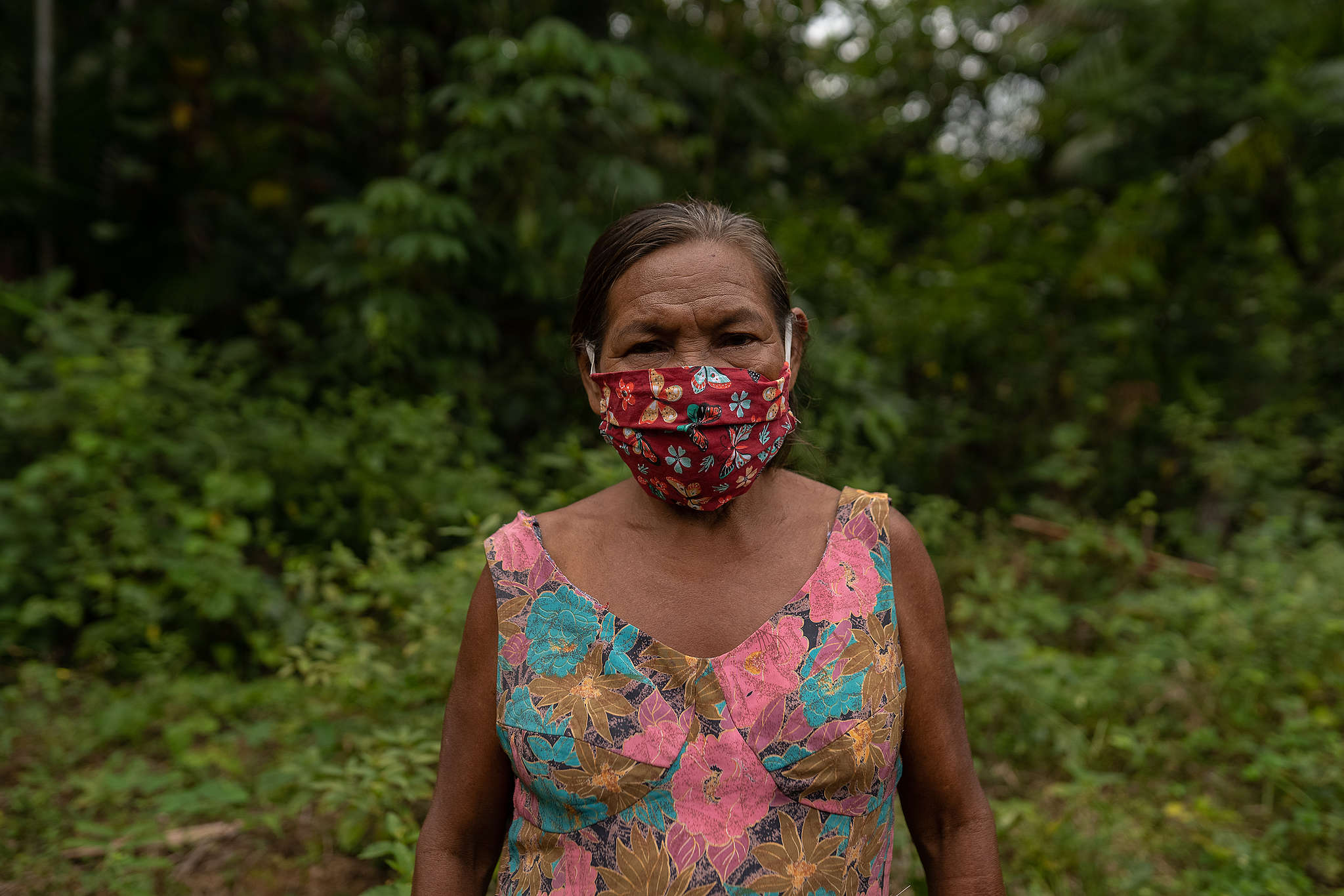by Luana Lila
The original version of this story was published in Portuguese on July 15 by Greenpeace Brazil.
Jair used both hands to cover his throat while tightly squeezing his eyes shut, showing that his throat “closed up” when he was infected with COVID-19. “Everything hurt,” he said, mimicking gestures and expressions of pain and suffering.
According to the leaders of the Dâw community, the pandemic affected almost all of its 140 residents.
The Dâw People (from the Naduhup linguistic family) live in the Waruá community. They are located on the right bank of the Rio Negro, in front of São Gabriel da Cachoeira in the state of Amazonas (AM), Brazil, a city where COVID-19 arrived abruptly at the end of April.

With a history scarred by episodes of violence and exploitation from non-Indigenous People, they almost became extinct in the 1980s, reaching just about 60 people. Today, the population is growing and undertakes cultural and language documentation projects in which the elders have been essential for passing on their knowledge.
“They are living in a time of rescuing and reaffirmation of their knowledge. Now, the pandemic has become a threat,” says Karolin Obert, a linguistics researcher who has worked with the Dâw People for over five years. According to her, the fear of extinction among them is real. “Epidemics are a recurring issue in the stories they tell. So, it ends up triggering a traumatic memory of diseases that non-indigenous people had transmitted in the past,” she said.
The vulnerability of this People reflects the situation of many Indigenous Peoples who are still fighting for better healthcare conditions and for their rights to be effectively guaranteed.

The memories of the past and closeness to the city made the news about COVID-19 scary for the population. “We were terrified, like in a panic. Everyone who passed through our community said that it was a powerful disease,” noted Roberto Carlos Fernandes Sanches, on-site professor, and leader. “I held a meeting and said, ‘we will have to leave the community.’”
From there, all the residents left their homes to isolate themselves inside the forest. They took shelter in wooden huts they use to make manioc flour or built emergency huts. Some shelters were approximately a 30-minute walk from the community, while others were located about two hours away on foot. “When we fled to the jungle, no one stayed behind. This community became a sad sight. Once in a while, I would call on my daughter and [see] only the empty houses. I wondered if my people would die,” remembers, emotionally, Auxiliadora Fernandes da Silva, teacher and community leader. “I don’t want my people to die, none of them, because my people are too few,” she adds.
As reported by the Dâw leaders, the families stayed inside the forest for a month. However, some of them began going to São Gabriel da Cachoeira to get supplies during this period, and the virus ended up spreading to them. Carlos believes that every community resident has been infected. Doctor Rafael Huff, from the Upper Rio Negro Special Indigenous Sanitary District (DSEI) that serves the community, agrees.
“Virtually 100% of the community must have been infected,” he said. Most showed symptoms, but there were not enough tests for the entire population. According to the doctor, 25 quick tests were performed, of which 14 Dâw were identified as positive for COVID-19. However, he says he cannot rule out other cases because of the possibility of false-negative results, which are frequent in this type of test. Also, because the community has a collective lifestyle, and it is difficult for everyone to adopt the habit of using face masks.

The Coping with COVID-19 Committee, which is operating in São Gabriel da Cachoeira, took some preventive measures in the community and brought some hygiene products and protective masks. There was also a booklet with information about the disease printed in the Dâw language.
Fortunately, up until now, despite the high rate of local infection, there have been no deaths among the Dâw Indigenous People in the community. Besides the medical support from DSEI and the actions of the Coping with COVID-19 Committee, they are giving themselves treatment with herbal teas and root teas. “We worried day and night, and when we met, we said ‘keep drinking the tea,’” recalls Auxiliadora, about their time isolated in the jungle.
Jair, who described his experience when infected with the disease, is also proud to show a 2-liter bottle with a brown liquid. Inside is a homemade herbal tea, which he says helped him cope with the disease.
Despite the recovery of those affected by COVID-19, the fear that the Dâw People’s existence could end because of the disease remains among the leaders. “If the disease killed [us], our numbers would decrease further, so I ask the authorities to pay more attention to our people,” says Roberto Carlos. He is still waiting for the opportunity to be able to test the whole community and thus see how many of the Dâw People have actually contracted the disease. He has also asked for better healthcare conditions for the People.
Luana Lila is the Head of Storytelling at Greenpeace Brazil.


No comments:
Post a Comment
Note: Only a member of this blog may post a comment.